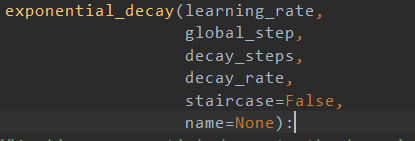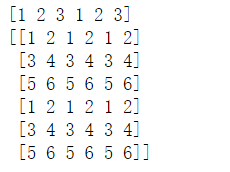1.tf.convert_to_tensor:传入的list必须是一个有固定长度的list,如果为2维的list,第二维的list的长度必须是固定。
2.tf.layers.conv1d(),默认宽卷积,里面的参数filter_size,为卷积核的height,而卷积核的width为输入的width
传入的是一个[batch_size,width,height],输出的是一个[batch_size,height,filter_num]
3.tf.layers.conv2d(),里面的参数filter_size为一个tuple,为卷积核的大小
传入的是一个[batch_size,width,height,channel_num],输入的是一个[batch_size,after_conv_width,afer_conv_height,filter_num]
4.tf.stack():拼接矩阵,可以指定维数,如果指定维数的话,那么拼接的就是指定维数的数据,如果不指定维数,那么就是拼接全部。
5.tf.unstack():拆解一个矩阵,可以指定维度。
tensorflow tf.split 和 tf.unstack 实例
import tensorflow as tf A = [[1, 2, 3], [4, 5, 6]] a0 = tf.split(A, num_or_size_splits=3, axis=1) a1 = tf.unstack(A, num=3,axis=1) a2 = tf.split(A, num_or_size_splits=2, axis=0) a3 = tf.unstack(A, num=2,axis=0) with tf.Session() as sess: print(sess.run(a0)) print(sess.run(a1)) print(sess.run(a2)) print(sess.run(a3))
[array([[1],[4]]), array([[2],[5]]), array([[3],[6]])]
[array([1, 4]), array([2, 5]), array([3, 6])]
[array([[1, 2, 3]]), array([[4, 5, 6]])]
[array([1, 2, 3]), array([4, 5, 6])]
tf.squeeze()
去掉维数为1的维度。
举个栗子:
# 't' is a tensor of shape [1, 2, 1, 3, 1, 1] tf.shape(tf.squeeze(t)) # [2, 3]
也可以指定去掉哪个维度:
# 't' is a tensor of shape [1, 2, 1, 3, 1, 1] tf.shape(tf.squeeze(t, [2, 4])) # [1, 2, 3, 1]
6.tf.assign()
https://www.jianshu.com/p/fc5f0f971b14
7.当出现变量已经存在时,要添加tf.name_scope()
8.tf.multiply() 点乘, 区别于tf.matul
a.如果是一个矩阵乘以一个数,矩阵里面每一个数都乘以这个数。
b.可以一个数乘以一个数
9.tf.contrib.rnn.static_bidirectional_rnn:组合正序和逆序,输入: [sequence_length, batch_size, hidden_size],输出: [sequence, batch_size, 2 * output_size], forward_state: [batch_size, 2 * output_size], backward_size: [batch_size, 2 * output_size]
encoder_outputs, forward_state, backward_state = rnn.static_bidirectional_rnn(forward_cell, backward_cell, input_content_emb, dtype=tf.float32, sequence_length=self.config.sequence_length)
10.tf.greater():
tf.greater 的输入是两个张量,此函数会比较这两个输入张量中每一个元素的大小,并返回比较结果。当tf.greater 的输入张量维度不一样时, Ten sorFlow 会进行类似NumPy 广播操作( broadcasting )的处理。
11.tf.where()
tf.where函数有三个参数。第一个为选择条件根据, 当选择条件为True 时, tf.where 函数会选择第二个参数中的值, 否则使用第三个参数中的值。
12.tf.train.exponential decay()

1.learning_rate:初始化的学习率
2.global_step:当前的步数
3.decay_steps:多少步衰减一次。
4.decay_rate: 衰减率
5.staricase:是否为阶梯衰减,设计为True的话, decay_steps=len(dataset)/len(batch)

13.tf.contrib.layers.l2_regularizer(weight_decay)(weight)/tf.contrib.layers.l1_regularizer(weight_decay)(weight)
正则化,下图为实例:

14. tf.variable_scope() tf.get variable()

15. tf.abs() 求绝对值
16. tf.tile()
tf.tile( input, #输入 multiples, #某一维度上复制的次数 name=None )
import tensorflow as tf a = tf.tile([1,2,3],[2]) b = tf.tile([[1,2], [3,4], [5,6]],[2,3]) with tf.Session() as sess: print(sess.run(a)) print(sess.run(b))

17. tf.einsum()
# Matrix multiplication >>> einsum('ij,jk->ik', m0, m1) # output[i,k] = sum_j m0[i,j] * m1[j, k] # Dot product >>> einsum('i,i->', u, v) # output = sum_i u[i]*v[i] # Outer product >>> einsum('i,j->ij', u, v) # output[i,j] = u[i]*v[j] # Transpose >>> einsum('ij->ji', m) # output[j,i] = m[i,j] # Batch matrix multiplication >>> einsum('aij,ajk->aik', s, t) # out[a,i,k] = sum_j s[a,i,j] * t[a, j, k]